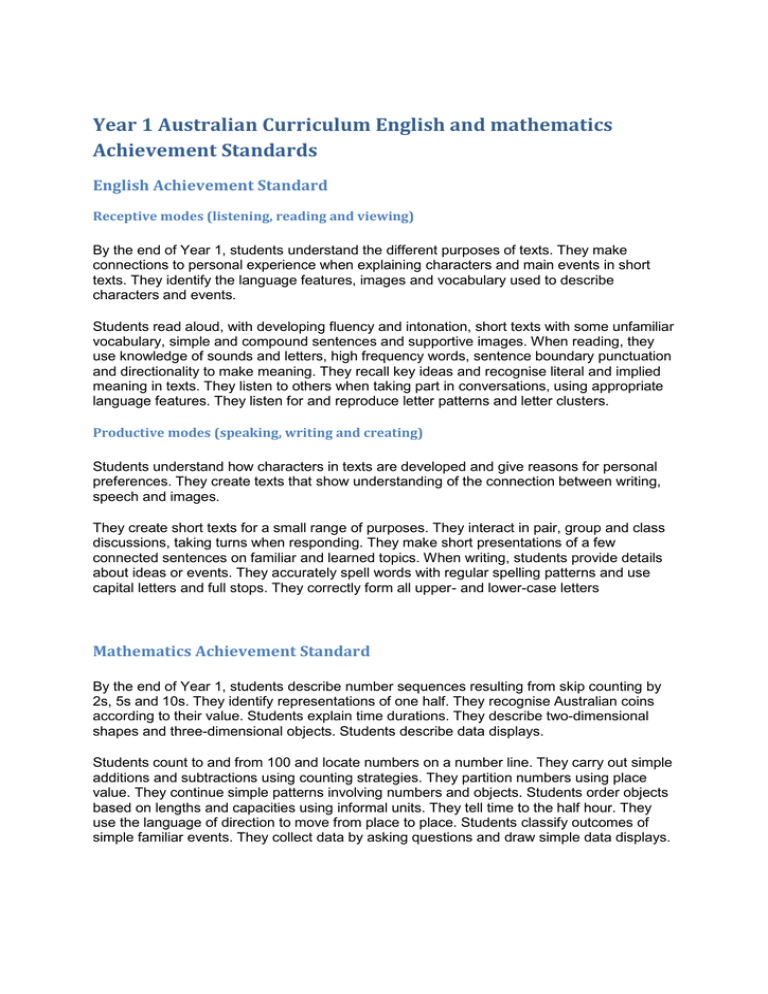Year 1 Achievement standards for English and Mathematics
advertisement

Year 1 Australian Curriculum English and mathematics Achievement Standards English Achievement Standard Receptive modes (listening, reading and viewing) By the end of Year 1, students understand the different purposes of texts. They make connections to personal experience when explaining characters and main events in short texts. They identify the language features, images and vocabulary used to describe characters and events. Students read aloud, with developing fluency and intonation, short texts with some unfamiliar vocabulary, simple and compound sentences and supportive images. When reading, they use knowledge of sounds and letters, high frequency words, sentence boundary punctuation and directionality to make meaning. They recall key ideas and recognise literal and implied meaning in texts. They listen to others when taking part in conversations, using appropriate language features. They listen for and reproduce letter patterns and letter clusters. Productive modes (speaking, writing and creating) Students understand how characters in texts are developed and give reasons for personal preferences. They create texts that show understanding of the connection between writing, speech and images. They create short texts for a small range of purposes. They interact in pair, group and class discussions, taking turns when responding. They make short presentations of a few connected sentences on familiar and learned topics. When writing, students provide details about ideas or events. They accurately spell words with regular spelling patterns and use capital letters and full stops. They correctly form all upper- and lower-case letters Mathematics Achievement Standard By the end of Year 1, students describe number sequences resulting from skip counting by 2s, 5s and 10s. They identify representations of one half. They recognise Australian coins according to their value. Students explain time durations. They describe two-dimensional shapes and three-dimensional objects. Students describe data displays. Students count to and from 100 and locate numbers on a number line. They carry out simple additions and subtractions using counting strategies. They partition numbers using place value. They continue simple patterns involving numbers and objects. Students order objects based on lengths and capacities using informal units. They tell time to the half hour. They use the language of direction to move from place to place. Students classify outcomes of simple familiar events. They collect data by asking questions and draw simple data displays.


